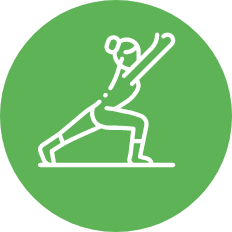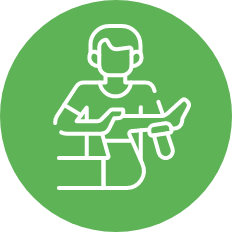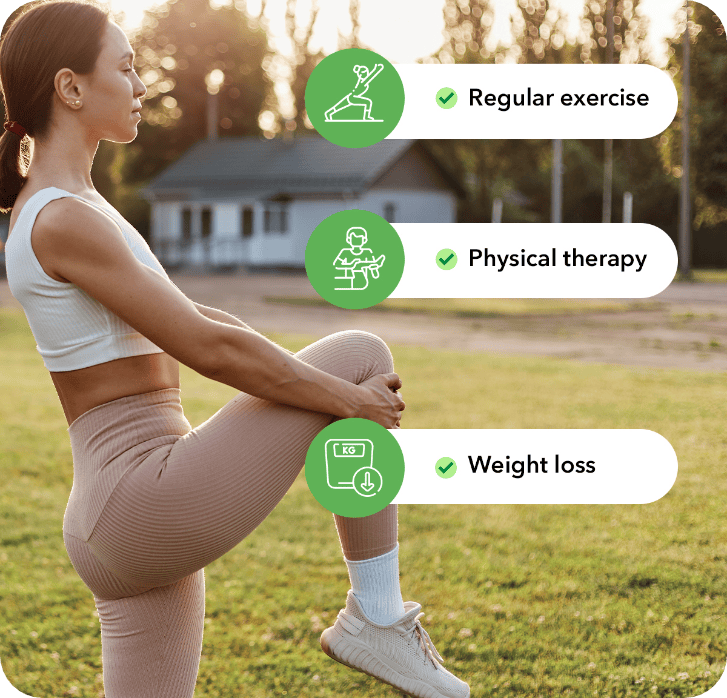The shoulder is the most complex joint in our body. It is essential for work, whether you report to an office or a construction zone, and few hobbies or activities are unaffected by shoulder joint pain. While the shoulder is the most frequently injured joint, not all pain in the shoulder results from a collision or fall. Let’s explore what can cause shoulder joint pain and how best to resolve it.
Anatomy of the Shoulder Joint
Although we speak of “the shoulder joint,” the shoulder’s extraordinary range of motion results from two joints, the glenohumeral joint and the acromioclavicular joint. The glenohumeral joint is the “ball and socket joint,” where the head of the upper arm bone (the ball) meets the socket of the shoulder blade. The acromioclavicular joint is where the collarbone meets the shoulder blade. Over a dozen muscles and three primary bones connect to form the two joints, working together to move and stabilize them. Tendons attach muscles to the bones, facilitating movement, while ligaments connect the bones together, providing stability.
The shoulder joint’s complexity allows it to perform a wide range of movements, including extension, flexion, adduction, abduction, internal and external rotation, and circumduction (swinging the arm in a circular motion). The shoulder lifts, throws, reaches, and swings with such strength, flexibility, and control that it is essential to athletics, work, daily activities, and nonverbal communication. Shoulder joint pain can result when any facet of this complex system is compromised through injury, inflammation, degeneration, mechanical stress, impingement, or instability.
Common Causes of Shoulder Joint Pain
Injury is a common cause of shoulder joint pain, but the most common is rotator cuff tendinitis. This is a painful condition arising from inflammation of the tendons and bursae in the shoulder joints due to repetitive mechanical stress, impingement or compression of the tendons, and degeneration of the tendon fibers.
Osteoarthritis is another frequent cause of shoulder joint pain. It involves the deterioration of cartilage (the smooth covering that enables joints to move easily). As the cartilage is worn away, bone rubs against bone, causing pain, swelling, and reduced motion in the joint.
What else can cause shoulder joint pain? Two common causes relate to daily activities: poor posture and repetitive stress.

Poor Posture
Good posture ensures that muscles and ligaments throughout the body are properly aligned, reducing wear and strain. Poor posture places undue stress on the shoulder joints, making them work harder than necessary, leading to muscle imbalances, strain, fatigue, tension, and pain. While our posture, good or bad, becomes a habit, you can improve your posture, thereby alleviating shoulder (and neck, back, hip, and knee) pain. Regularly check your posture, especially after sitting for long periods. Ensure your shoulders are back and down, your chest is open, and your back is straight. Check yourself in a mirror until you have a feel for it.

Repetitive Strain
Repetitive stress results from continuous, repetitive motions that add up to strain the shoulder joint. Playing sports such as baseball, tennis, volleyball, bowling, golf, swimming, rowing, and weightlifting can all lead to repetitive shoulder strain. But so does computer work, painting, assembly line work, playing the violin, and gardening. Repetitive strain causes pain, stiffness, and swelling of the shoulder joint muscles. When you cannot avoid repetitive motion, take care to include plenty of breaks, stretching, and gentle exercise to counteract the effects.
To ease shoulder joint pain, improve your posture and compensate for repetitive tasks. Focus on exercises to strengthen your core muscles as well as the back and shoulders. Adjust your work environment and use ergonomic furniture to support your body and encourage healthy posture and movements.

Seeking Professional Help
If you’re experiencing severe shoulder pain, it may be time to seek medical attention. (If you’re having shoulder pain paired with trouble breathing, sweating, or tightness in your chest, this can signal a heart attack; call 911 or emergency assistance.)
Make an appointment if your shoulder joint pain includes:
- Swelling
- Redness
- Warmth in the joint
- Increasing pain
- Increasing stiffness
- Inability to carry things or use the arm
- Interference with daily activities
Initial assessments typically involve a physical examination, followed by imaging tests to pinpoint the cause of your shoulder joint pain. X-rays can reveal bone-related issues, while MRI (Magnetic Resonance Imaging) scans provide detailed images of soft tissues, including muscles and tendons. Ultrasounds may also be used to assess the dynamic function of the shoulder joint. With these results, your doctor can develop a treatment plan that may include physical therapy, medication, or surgery, depending upon the diagnosis.
Non-Surgical Treatment Options for Shoulder Joint Pain
While conventional treatments for shoulder joint pain are often limited to physical therapy, steroid injections, or surgery, other options offer tremendous promise. Therapeutic massage, supplements for shoulder pain, and regenerative medicine treatments can offer significant benefits.
QC Kinetix provides regenerative therapy for shoulder joint pain with the goal of alleviating pain, restoring function, and improving mobility. This treatment is ideal for treating injuries, chronic conditions like bursitis, or repetitive strain. Regenerative treatment harnesses the body’s healing mechanisms and directs them to the source of your pain. Drug-free and non-invasive, regenerative therapy does no damage to the shoulder, and you don’t have to miss a day of work for the procedure or recovery.
Preventing Shoulder Joint Pain
There are many proactive lifestyle changes that can help you prevent pain in your shoulders, including:
- Maintaining a healthy weight.
- Eating a well-balanced diet rich in anti-inflammatory foods.
- Establishing an exercise routine that focuses on strengthening and flexibility.
- Practicing good posture.
- Adopting ergonomic practices at work.
- Avoiding long periods of inactivity.
- Taking frequent breaks during repetitive strain activities.
Discover Relief for Shoulder Joint Pain at QC Kinetix
Now that you better understand what can cause shoulder joint pain, it’s time to do something about it. QC Kinetix provides comprehensive regenerative joint pain treatments, including treatments for shoulder pain. Contact your local QC Kinetix today for your free consultation.
FAQs About Shoulder Joint Pain
How do you know if shoulder pain is muscle pain or joint pain?
Pain during movement indicates muscle pain, whereas you feel joint pain when the joint is at rest.
How long is too long for shoulder pain?
Minor shoulder pain should resolve within two weeks. If it persists or grows worse, it’s time to seek medical advice.
When should you not ignore shoulder pain?
Shoulder joint pain is your body telling you something is wrong — don’t ignore it. If the pain is severe, gets worse, or is accompanied by swelling or fever, seek medical attention. You may have an injury or underlying condition.


